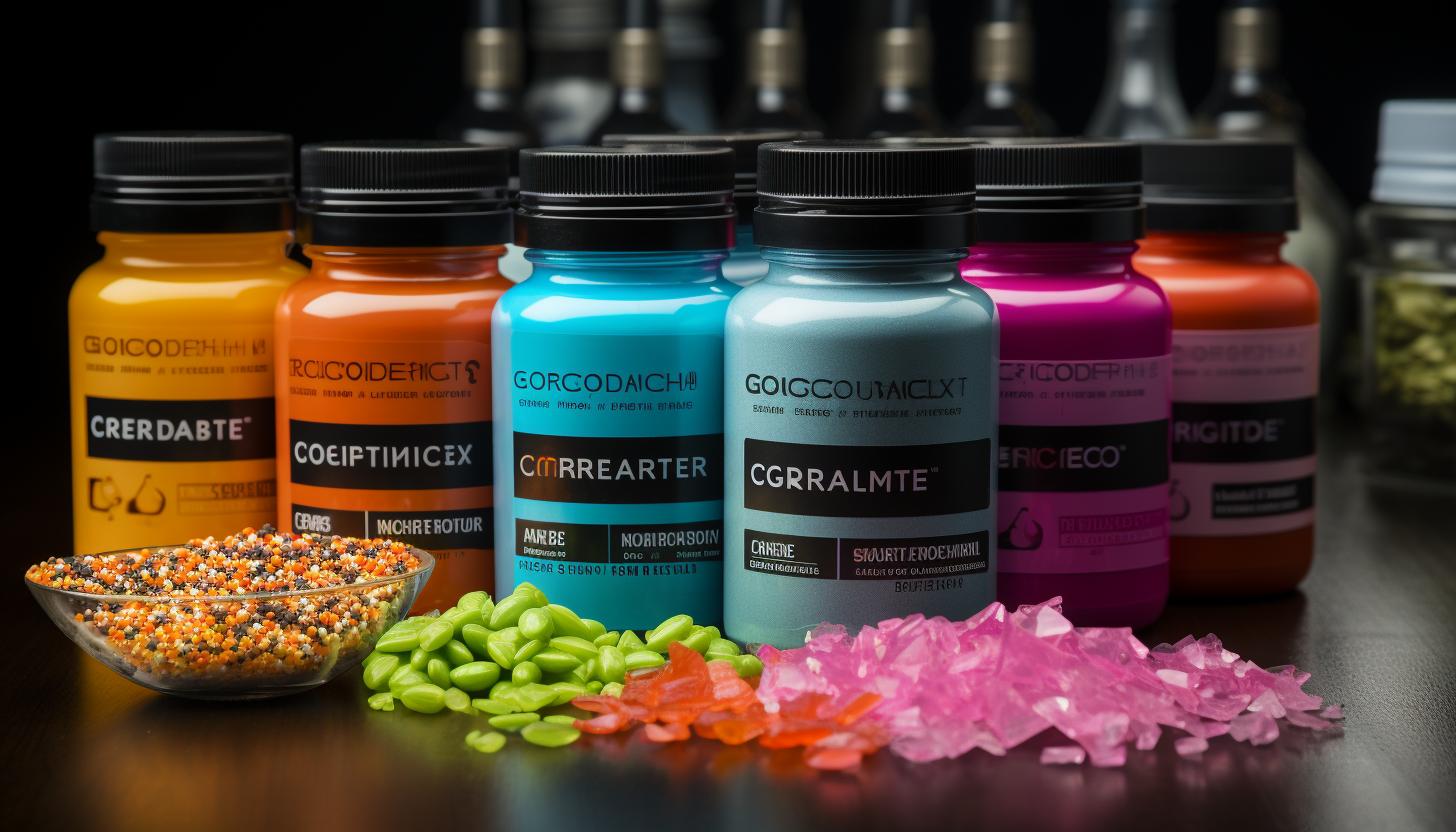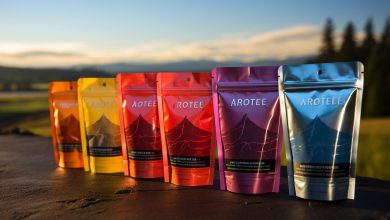Using Energy Gels for Endurance Training: Dos and Don’ts

Are you tired of hitting a wall during your endurance training? Don’t worry, there’s a solution! Energy gels can be your secret weapon to help you power through those long runs and intense workouts.
In this article, we’ll show you the dos and don’ts of using energy gels for endurance training. From the benefits they provide to how to incorporate them into your routine, we’ve got you covered.
Say goodbye to fatigue and hello to peak performance with energy gels.
The Benefits of Energy Gels for Endurance Training

Energy gels can provide a quick and convenient source of fuel during endurance training. When it comes to the benefits, there are several pros and cons to consider.
Let’s start with the positives. Energy gels are portable and easy to consume on-the-go, making them ideal for long-distance activities like running or cycling. They contain a high concentration of carbohydrates, which are essential for providing energy to working muscles. This can help delay fatigue and improve performance during prolonged exercise sessions.
Timing and dosage play a crucial role in maximizing the benefits of energy gels. It is recommended to consume an energy gel 15-30 minutes before starting your workout to allow enough time for digestion and absorption. During longer workouts lasting over an hour, consuming an additional gel every 45-60 minutes can help maintain energy levels.
However, it’s important to be mindful of potential drawbacks as well. Some individuals may experience gastrointestinal issues like stomach cramps or bloating after consuming energy gels due to their high carbohydrate content or specific ingredients used in their formulation.
How to Properly Incorporate Energy Gels Into Your Training Routine

To properly incorporate energy gels into your routine, make sure you follow these guidelines:
– Proper Timing
– Consume the energy gel about 15-30 minutes before your workout or race to allow enough time for it to be digested and absorbed.
– If your activity lasts longer than an hour, consider taking additional gels every 45-60 minutes to maintain energy levels.
– Potential Side Effects
– Energy gels are generally safe when used as directed, but some individuals may experience gastrointestinal issues such as stomach cramps or diarrhea.
– To minimize the risk of side effects, drink plenty of water while consuming the gel and avoid trying new brands or flavors on race day.
Remember that everyone’s nutritional needs are different, so it’s essential to experiment with different gel brands and flavors during training. This will help you identify what works best for your body and prevents any potential digestive discomfort during competitions. By timing your consumption correctly and being aware of possible side effects, you can maximize the benefits of energy gels for endurance training.
Now let’s explore some common mistakes to avoid when using energy gels for endurance training.
Common Mistakes to Avoid When Using Energy Gels for Endurance Training

Avoid the mistake of neglecting proper hydration while incorporating energy gels into your endurance routine. Proper usage of energy gels is crucial for optimizing performance and preventing common mistakes.
One mistake many athletes make is relying solely on energy gels for fuel without considering their hydration needs. Energy gels are designed to provide a quick source of carbohydrates, but they do not contain enough water to keep you properly hydrated during prolonged exercise.
To avoid this mistake, it’s important to drink water or electrolyte-rich fluids alongside your energy gels. The general guideline is to consume about 8-12 ounces (240-360 ml) of fluid every 15-20 minutes during exercise lasting longer than one hour. This will help maintain proper hydration levels and prevent dehydration, which can lead to decreased performance and potential health risks.
Another common mistake is consuming too many energy gels at once or too frequently. While energy gels can provide a quick burst of fuel, consuming them in excess can lead to digestive issues such as stomach cramps or diarrhea. It’s recommended to start with one gel every 45-60 minutes and adjust according to your individual needs and tolerance.
Choosing the Right Energy Gel for Your Training Needs

When choosing the right gel for your training needs, consider factors such as flavor preference and carbohydrate content. Finding an energy gel that not only provides the necessary fuel but also tastes good can make a big difference in your training experience.
Here are some tips to help you choose the perfect energy gel:
– Flavor Preference: Energy gels come in a variety of flavors, from fruity to chocolatey. Experiment with different flavors during your training runs to find out which ones you enjoy the most. Remember, if you don’t like the taste, it will be difficult to consume during long workouts or races.
– Carbohydrate Content: Look for gels that contain a balanced mix of carbohydrates, such as glucose and fructose. These types of carbohydrates are quickly absorbed by the body and can provide a sustained source of energy during endurance activities.
Now, while energy gels are popular among athletes for their convenience and effectiveness, they may not be suitable for everyone. If you’re looking for alternatives to energy gels, here are a few options to consider:
– Sports Drinks: These beverages often contain electrolytes and carbohydrates that can provide similar benefits as energy gels.
– Real Food: Many endurance athletes opt for natural food sources like bananas or dates instead of relying solely on processed gels.
Remember that finding the right fueling strategy is highly individualized, so it’s important to experiment with different options during your training sessions to see what works best for you.
Tips for Maximizing the Effectiveness of Energy Gels During Endurance Training

If you want to get the most out of your energy gels during endurance training, it’s crucial to stay properly hydrated. Maximizing performance requires strategic timing of gel consumption. To optimize the effectiveness of energy gels, follow these practical tips.
Timing is key when it comes to consuming energy gels. Aim to take them about 15-30 minutes before you expect a drop in energy levels, such as during long runs or intense workouts. This will allow the carbohydrates in the gel to be digested and absorbed by your body just when you need them most.
During longer training sessions lasting over an hour, consider taking additional gels every 45-60 minutes to maintain a steady supply of fuel for your muscles. Remember that individual tolerance varies, so experiment with different timings and amounts during practice runs to find what works best for you.
In addition to timing, proper hydration is essential for maximizing the benefits of energy gels. Make sure you’re adequately hydrating before and during your workouts. Sip water or electrolyte-rich fluids alongside your gel intake.
Conclusion
In conclusion, energy gels can be a valuable tool for enhancing your endurance training. By providing a quick and convenient source of fuel, they can help improve your performance and delay fatigue.
However, it is important to use them properly and avoid common mistakes such as consuming too many gels or relying solely on them for nutrition. Remember to choose the right gel for your specific needs and follow the dosing guidelines provided.
With these tips in mind, you can maximize the effectiveness of energy gels and take your endurance training to new heights. So go ahead, fuel up and conquer those long runs!






